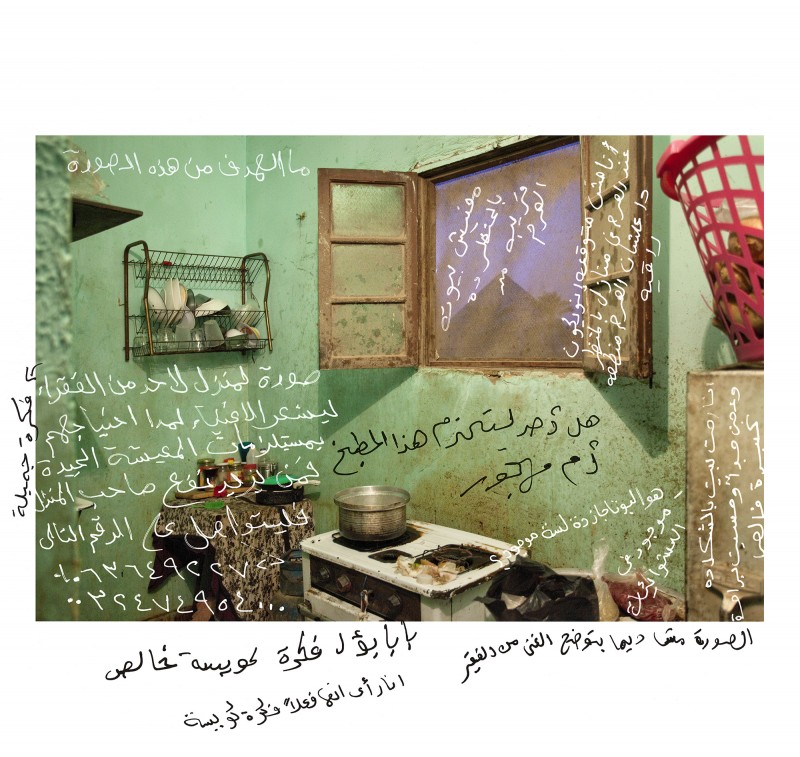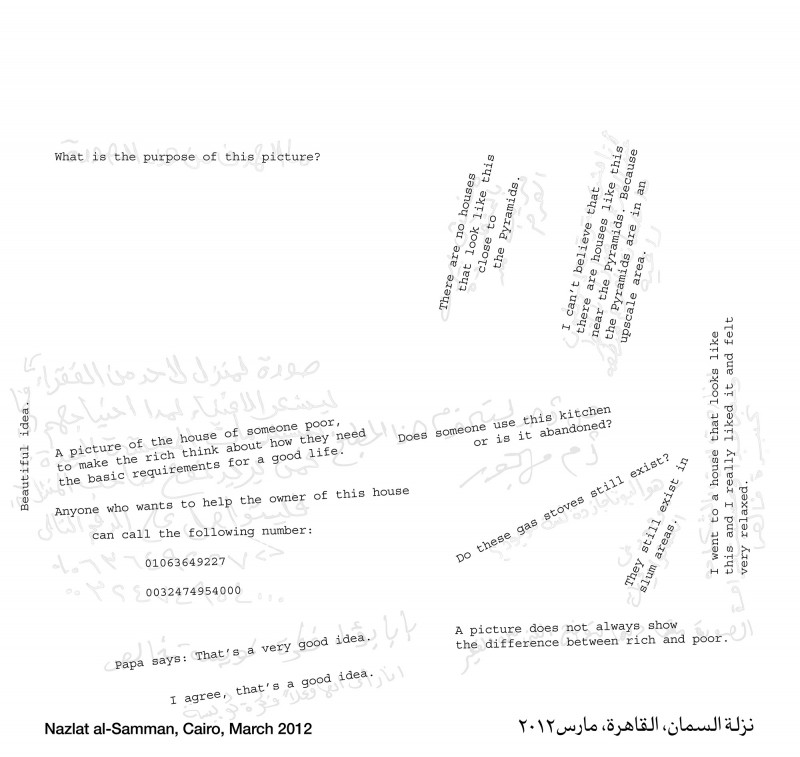Book of the Month: As it may be
Book of the Month: As it may be
Bieke Depoorter
March 16, 2018

© Bieke Depoorter
Last year Depoorter returned to visit the country with a first draft of her book, inviting other people to write comments directly on the photographs. The resulting publication comprises 44 images conveying the home lives of each family, embellished with a commentary. The handwritten Arabic script settles over the pictures like an additional layer, accompanying the visual narrative with statements that range from humorous comments to expressions of despair.
The volume is complemented by a 66-page booklet, in which the original handwritten notes are overlaid with the corresponding English translations. Engaging with Depoorter’s multi-layered approach yields a profound insight into her chosen subject matter. The photographer’s selection presents the viewer with an unusually rich spectrum of different mindsets and attitudes. It is astounding how, time and again, she was able to gain her subjects’ trust – which was the prerequisite for these deeply personal portraits.
Despite being an outsider – both due to her role as a photographer and as a visitor from another culture – she managed to establish a dialogue with all of her hosts. The trust the photographer received from those she encountered sets this book apart from any ordinary media coverage – turning it into an illuminating visual journey through a complex country.
Every day, ninety million Egyptians move back and forth between the reality they experience out on the streets, and the safe haven of their family homes. By highlighting this juxtaposition, as well as showing the intrusion of politics into people’s everyday lives, Depoorter’s book resembles a kaleidoscope filled with a myriad of hopes and dreams.
Bieke Depoorter: As it may be (featuring an essay by Ruth Vandewalle) 44 colour illustrations, 62 pages; includes a 66-page booklet; Arabic and English, 28 x 26.4 cm, Aperture
Bieke Depoorter+-
Born 1986 in Kortrijk, Belgium. In 2009, she graduated from the Royal Academy of Fine Arts in Ghent with a a master’s degree in photography. Depoorter joined the Magnum Agency at 25, becoming a full member in 2016. She has received several awards for her documentary projects, including the Magnum Expression Award 2009. Staying overnight at the homes of those she portrays is characteristic for her way of working. Previous projects have taken her on journeys through Russia ( Ou Menya, 2012) and the USA ( I am about to call it a day, 2014). In her portraits of people and their living spaces, Depoorter achieves a skilful blend of poetry and travel reportage – allowing for astonishingly personal insights into her subjects’ lives. More

© Bieke Depoorter

© Bieke Depoorter

© Bieke Depoorter

© Bieke Depoorter